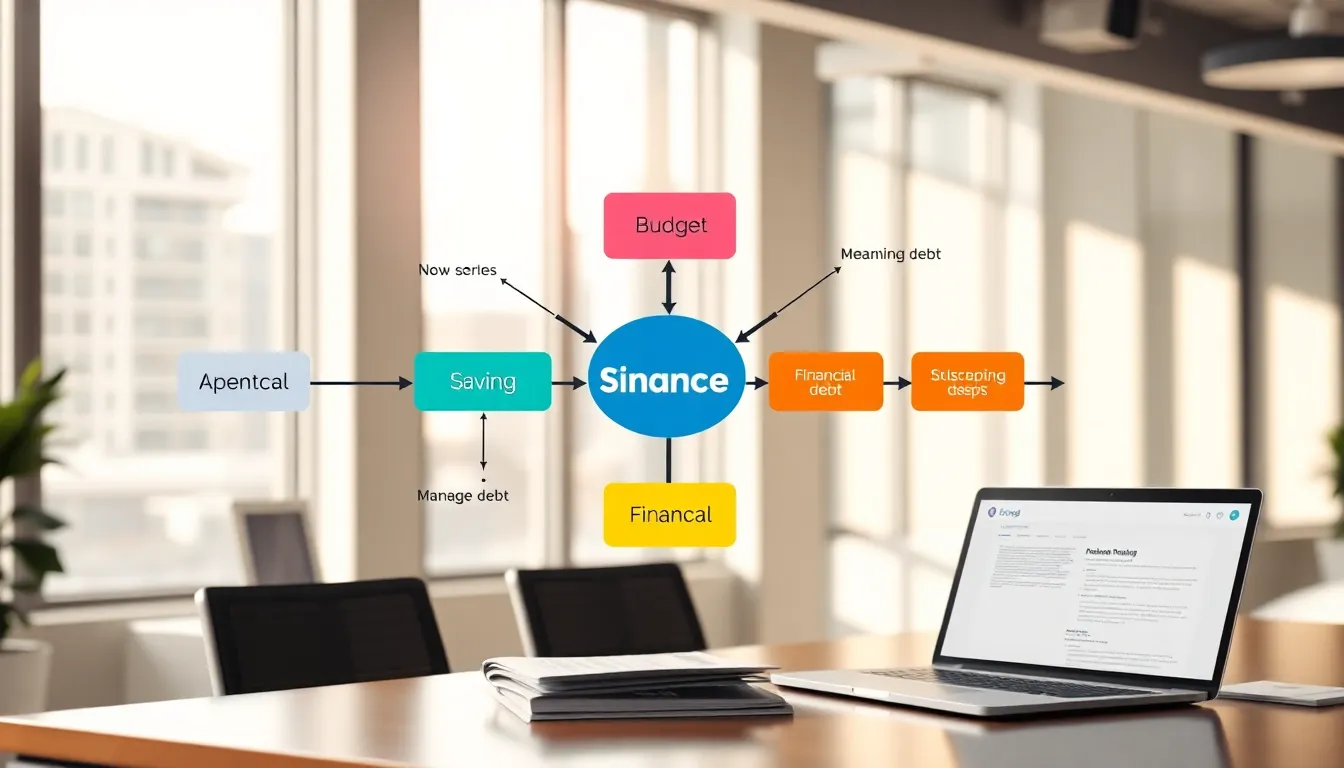Navigating the world of personal finance is like trying to find your way through a maze, except you don’t want to end up in a dead end with a pile of bills and no plan in sight. Luckily, a personal finance flow chart is like that trusty map that guides you through the twists and turns of budgeting, saving, and investing. It’s clear, it’s structured, and it’s about time to make your financial journey as straightforward as possible. So, why not immerse and learn how this simple visual tool can empower anyone to take control of their finances with confidence?
Table of Contents
ToggleUnderstanding Personal Finance

Personal finance encompasses all the financial activities an individual engages in, including budgeting, saving, investing, and managing debt. It’s not just about how much money one makes, but rather how one manages those resources effectively. Understanding personal finance can often feel like learning a new language: it involves terms like assets, liabilities, cash flow, and net worth, which can be confusing without the right guidance.
Personal finance is increasingly important in today’s fast-paced world. Making informed financial decisions can help people achieve their dreams, whether that means buying a home, traveling the globe, or simply feeling secure in their retirement years. A personal finance flow chart can simplify this complex web of financial tasks into a clear, easy-to-follow roadmap.
Importance of Financial Planning
Financial planning is vital for a healthy financial life. It acts as a roadmap that keeps spending and savings in check, allowing individuals to make informed choices about their financial future. Neglecting financial planning often leads to unnecessary stress, especially during emergencies or unexpected events.
Consider this: Would you embark on a road trip without a GPS? Probably not. The same logic applies to finances. Planning helps individuals prepare for short-term and long-term financial goals. It ensures that there’s always a plan for unexpected expenses. By investing time in financial planning, individuals can gain peace of mind, knowing they’re working towards their financial aspirations.
Key Components of a Personal Finance Flow Chart
A personal finance flow chart serves as a visual guide to understanding one’s financial situation. Here are key components that everyone should consider:
Step 1: Assess Your Financial Situation
Before diving into any financial decisions, it’s essential to evaluate your current financial health. Take stock of income, expenses, assets, and liabilities. This will help establish a baseline from which to move forward.
Step 2: Set Financial Goals
Setting specific, measurable, achievable, relevant, and time-bound (SMART) goals gives direction to financial journeys. Whether it’s saving for a new car or building an emergency fund, clearly defined goals make it easier to stay focused.
Step 3: Create a Budget
A well-structured budget helps track spending and ensures that money is allocated to the right areas. Without a budget, it is easy for expenses to spiral out of control. Establishing categories such as necessities, savings, and entertainment can clarify financial decisions.
Step 4: Manage Debt
Understanding how to manage and reduce debt is crucial. High-interest debt can be a significant roadblock to achieving financial goals. Individuals should prioritize paying off debts as swiftly as possible to regain financial stability.
Step 5: Save and Invest Wisely
Incorporating smart saving and investing strategies is vital for long-term wealth accumulation. Individuals should consider selecting diverse investment avenues, from stocks to mutual funds, to maximize their returns.
Step 6: Review and Adjust Regularly
The financial landscape is constantly changing. Regular reviews of one’s financial situation and adjustments to the flow chart can help adapt to new goals, financial conditions, or life circumstances.
Visualizing Your Financial Journey
A personal finance flow chart visually represents one’s financial journey. It makes complex information digestible, allowing individuals to see how different financial components work together. Visual learning can enhance understanding and retention of financial concepts.
Using colors, arrows, and symbols in a flow chart can make the entire process more engaging. It can break down intimidating subjects into manageable chunks, showing how actions such as budgeting affect savings and investments. The flow chart can also serve as a motivational tool, encouraging continuous progress by marking milestones achieved.
Tools and Resources for Creating Flow Charts
Creating a personal finance flow chart can seem daunting, but several tools can simplify the process. Here are some popular options:
- Lucidchart: An intuitive online tool that allows users to create flow charts, diagrams, and mind maps easily.
- Canva: While this is typically known for graphic design, Canva offers templates specifically for flow charts, making it easy for anyone to get started.
- Microsoft Excel: Many people overlook Excel, but its charting functionalities can be used effectively to create detailed flow charts.
- Google Drawings: A straightforward tool for creating flow charts without needing complex software.







